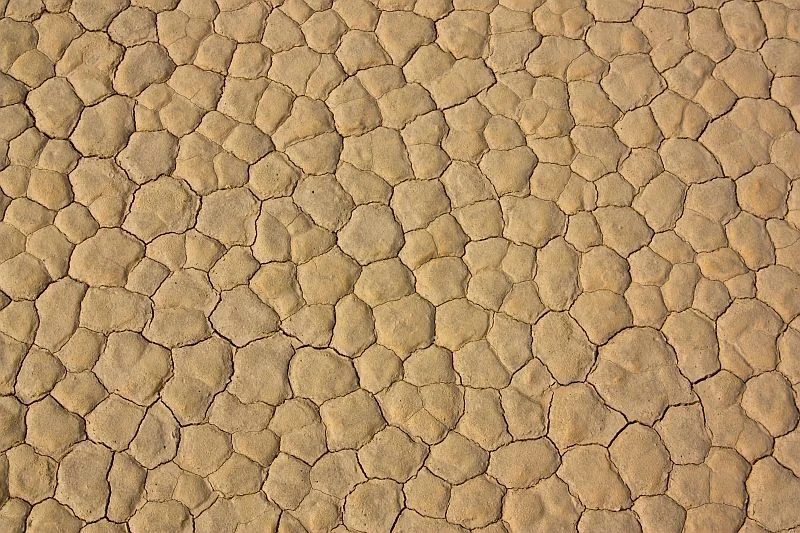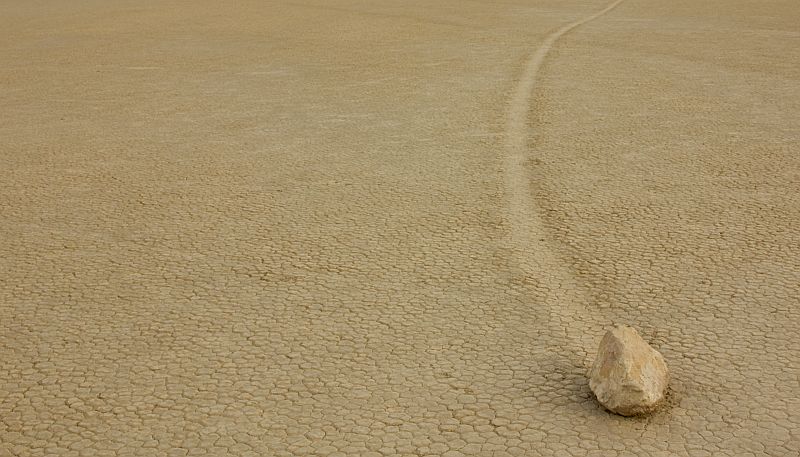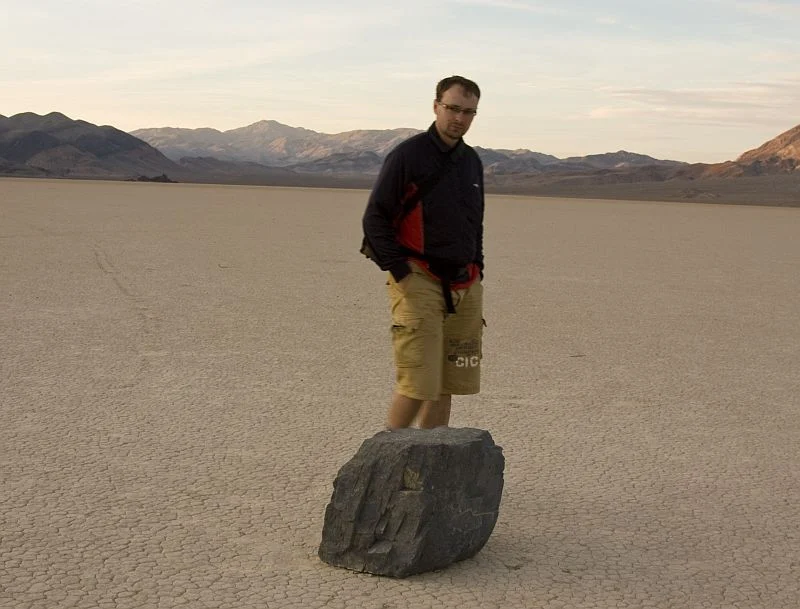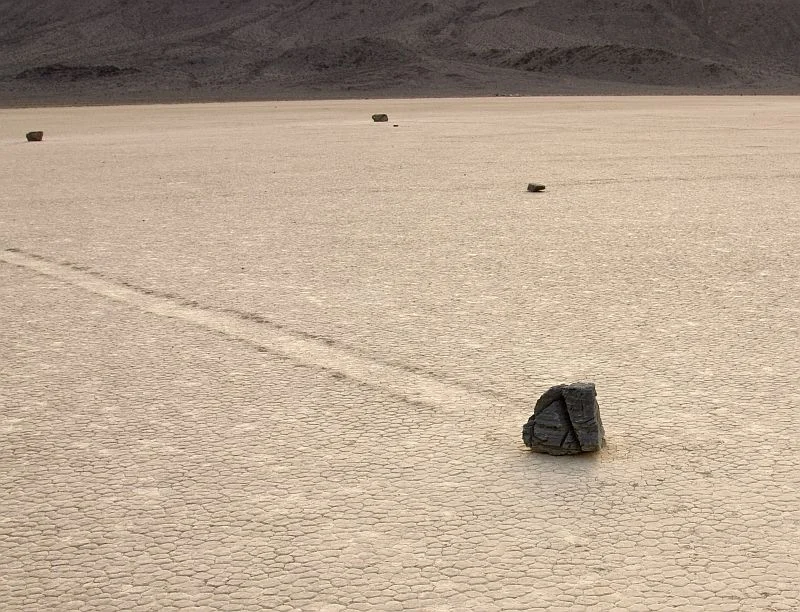Racetrack Playa is a dry lake in Death Valley. It is home to a geological wonder — moving or sailing rocks. For me, the playa itself without the moving rocks was already quite an experience. The surface of the playa is almost perfectly flat (northern end is few centimeters higher) and firm. There is very easy to walk although it is clear that sometimes after heavy rain the playa must be wet or covered with shallow water body. Racetrack Playa is an endorheic basin which means that there is no outflow. The playa collects water and mud that originates from the surrounding mountains. Water disappears quickly because Death Valley has a hot desert climate, leaving behind dry muddy surface with countless polygonal mudcracks (polygons generally less than 10 cm in diameter).
It is obvious that Racetrack Playa is sometimes covered with water not only because its surface is muddy but also because there are rocks on the playa surface which apparently are moving along the surface, leaving behind clear tracks. This can happen only when the surface is saturated with water. As much as I know, there is no certainty about the mechanism that moves the rocks. It is generally believed that it must be a very strong gust of wind that initiates the movement on the wet and slippery surface (there is much less push needed to keep the rocks moving, initiating the movement is the hardest part). I support the view that rocks are moving primarily because of wind although I have to admit that it is very hard to imagine wind that is so strong. Some rocks are really big and heavy. It has to be one hell of an environment there when these things are happening. It is no wonder that no one has ever witnessed the process.




Racetrack Playa is in Death Valley National Park but it is somewhat harder to access than many other tourist attractions there. It is an isolated and remote valley 27 miles away from Ubehebe Craters where the paved road ends. However, don’t let it scare you. It is quite possible to go there even with a small car. I have read that this rough road is notorious for puncturing tires of small cars but it can really happen anywhere. It happened to me in Death Valley as well but not on a gravel road. It was paved road near Stovepipe Wells. When that happened I thought that I have a nasty and possibly time-consuming problem at hand because the temporary tire is really only a temporary solution in such conditions and it was Sunday. In Europe, people are not moving their lazy ass in Sunday but America seems to be somewhat different, help was actually nearby in the valley. There is a man working at the Chevron of Furnace Creek who quickly repaired the tire for $20. Thanks, you saved me lots of valuable time!
Update
It seems that we finally have a plausible explanation about what actually moves these rocks. It is not wind or more precisely it is not wind alone. It could not be because there are really no gusts that strong to moves these rocks. It seems to be ice that is doing the pushing job. You can read more about it here.
